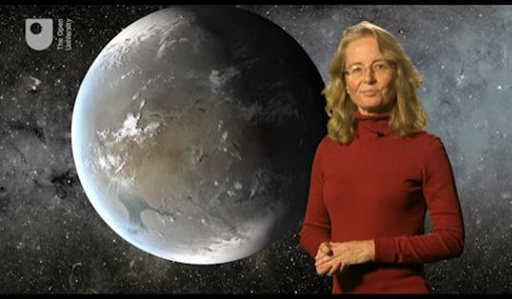Week 8: Where do we go from here?
Introduction
This is the final week of your introduction to exoplanet science, and this week you’ll be looking at the future of the field. There’s a lot to be excited about, and much potential for groundbreaking discoveries over the next few years. We hope you’ve enjoyed this course and that you’ll be keeping an eye on future developments!
Watch the following video with Carole Haswell.
Download this video clip.Video player: boc_exo_1_video_week8_carole_upload.mp4


Transcript
Carole Haswell:
This week, you’ll study arguably the most important exoplanet discovery there will ever be. This week’s title, ‘Where do we go from here?’ refers to the plans for new telescopes to find exoplanets like our own planet Earth. As you will see, ‘Where do we go from here?’ might have a more literal interpretation too.
There are already people living for months on the International Space Station and there are plans afoot for a colony on Mars. We might even be able to send people to new planets outside our Solar System in the not too distant future. Probably I won’t live to see that, but some young children alive today might do.
My hope for you, if you’ve managed to work through everything in this course, is that you will be inspired to study more science. There are so many exciting things going on, but also many problems facing us that we can only solve with scientific innovation. We need as many people as possible working together to deal with the challenges facing us and our own precious planet.
Interactive feature not available in single page view (see it in standard view).
By the end of this week, you will be able to:
- explain why it is likely that nearby stars host exoplanets
- describe the 2016 planet search around Proxima Centauri
- explain the importance of the Kepler-444 planetary system
- summarise prospects for extraterrestrial life
- be familiar with Gaia, TESS, JWST, PLATO, Twinkle and ARIEL
- describe current and future possibilities for direct imaging of exoplanets.
